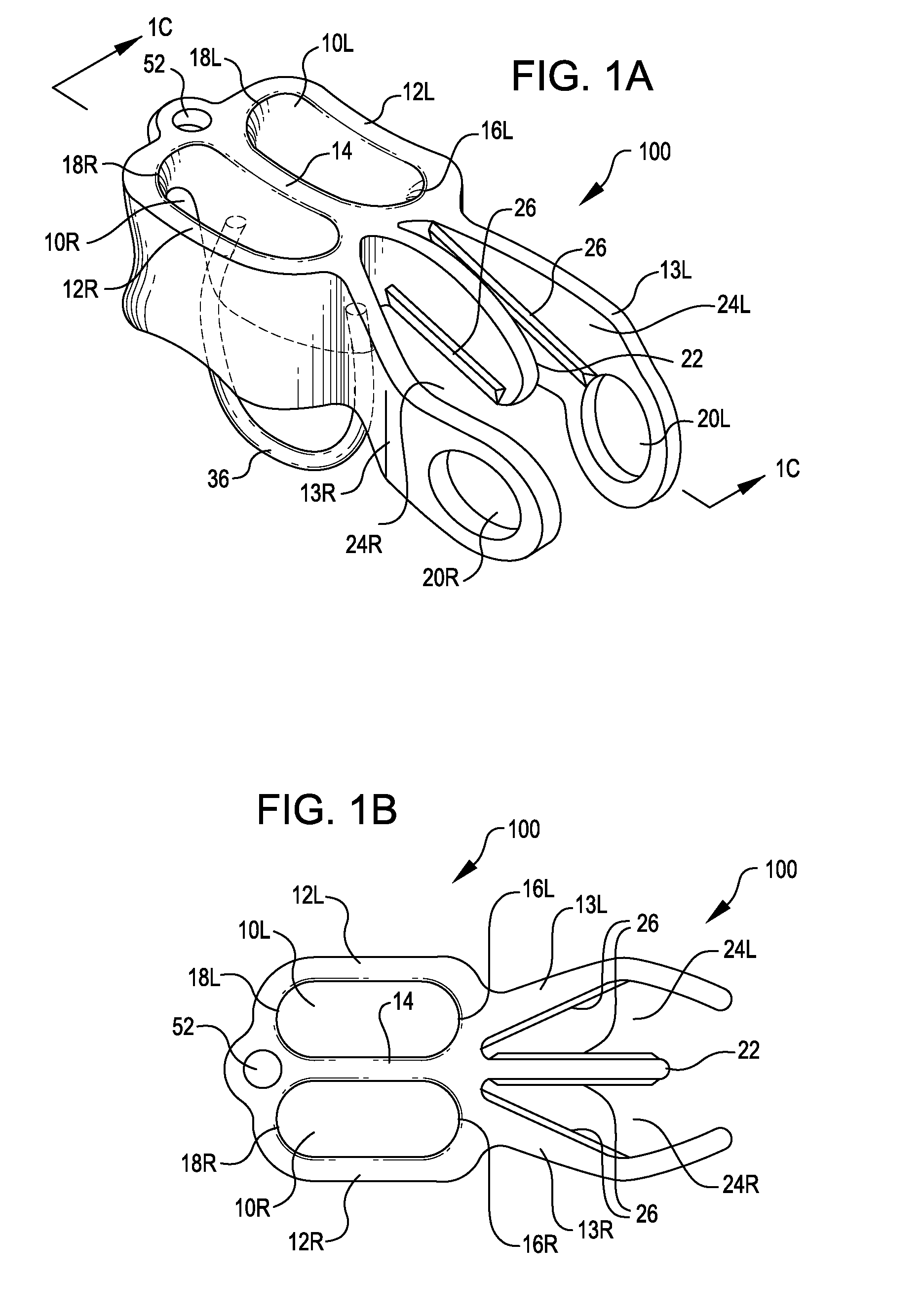Rope handling device with secondary locking feature
a technology of rope handling device and locking feature, which is applied in the direction of safety belts, sport equipment, cleaning equipment, etc., can solve the problems of reducing limiting the use value of rope handling device, and most mechanical automatic/assisted locking belay devices, etc., to achieve the effect of effectively braking and stopping the motion of rope through the rope handling devi
- Summary
- Abstract
- Description
- Claims
- Application Information
AI Technical Summary
Benefits of technology
Problems solved by technology
Method used
Image
Examples
Embodiment Construction
[0041]Referring to FIGS. 1A and 1B, rope handling device 100 comprises left and right slots 10L and 10R positioned between and left and right sides 12L and 12R, and separated by center divider 14. Divider 14 forms the inner surfaces of slots 10L and 10R, and sides 12L and 12R form the outer surfaces of slots 10L and 10R. Sides 12L and 12R connect with center divider 14 at a forward end of slots 10L and 10R to form left and right front slot-ends 16L and 16R. Sides 12L and 12R connect with center divider 14 at a rearward end of slots 10L and 10R to form left and right rear slot-ends 18L and 18R. Slots 10L and 10R are thereby closed-ended and have a substantially contiguous peripheral surface. Slots 10L and 10R as shown have a generally similar shape and size but may be of differing shapes and sizes, for example, to better accommodate a different size of rope in each slot. A loop of climbing rope 38 that is passed through slot 10L or 10R from above to form a loop extending below the sl...
PUM
 Login to View More
Login to View More Abstract
Description
Claims
Application Information
 Login to View More
Login to View More - R&D
- Intellectual Property
- Life Sciences
- Materials
- Tech Scout
- Unparalleled Data Quality
- Higher Quality Content
- 60% Fewer Hallucinations
Browse by: Latest US Patents, China's latest patents, Technical Efficacy Thesaurus, Application Domain, Technology Topic, Popular Technical Reports.
© 2025 PatSnap. All rights reserved.Legal|Privacy policy|Modern Slavery Act Transparency Statement|Sitemap|About US| Contact US: help@patsnap.com



